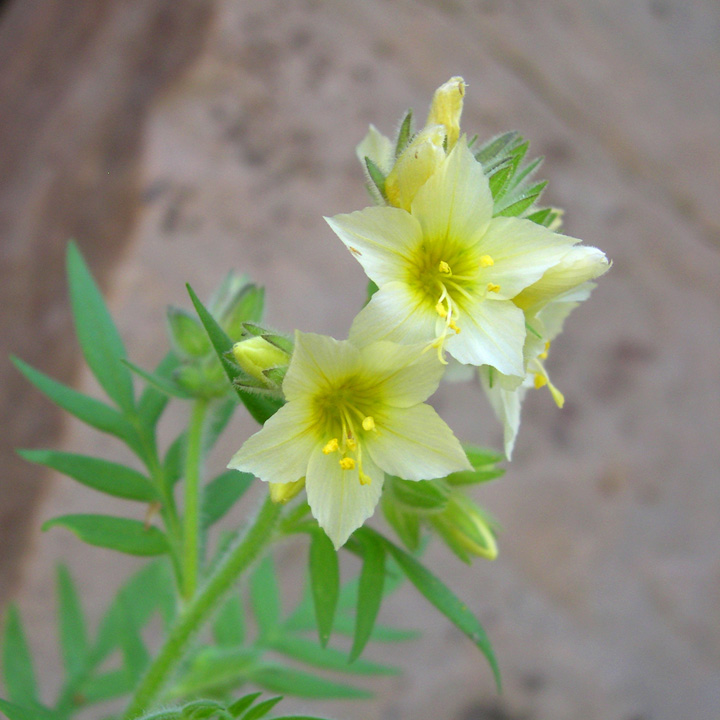Polemonium
|
Family: Polemoniaceae |
PLANT: Perennial herbs in AZ; stems erect to decumbent. LEAVES: alternate, pinnately lobed to compound; leaflets sessile, entire or divided into 2-5 lobes. INFLORESCENCE: terminal, open to compact and capitate or rarely axillary and then solitary. FLOWERS: actinomorphic; calyx herbaceous, becoming membranous, not ruptured in fruit, the lobes rounded to attenuate; corolla rotate to funnelform or salverform, white, yellow, blue or bluish violet; stamens equally inserted on the corolla tube; filaments equal in length, basally pilose; anthers included to exserted; style included to exserted, with 3 stigmatic branches. CAPSULE: globose to ovoid, dehiscent; seeds 1-20 per locule, gelatinous or not when wet. 2n=18,36. NOTES: ca 28 spp.; w N. Amer., 1 spp. in s S. Amer., several spp. in Eurasia. (for Polemon, a Greek philosopher or perhaps from the Greek word, polemos, meaning strife). Grant, V. 1989. Bot. Gazette 150: 158-169. REFERENCES: Dieter H. Wilken and J. Mark Porter, 2005, Vascular Plants of Arizona: Polemoniaceae. CANOTIA 1: 1-37. Cal herbaceous, somewhat accrescent and becoming chartaceous; cor tubular-funnelform or subsalverform to campanulate or nearly rotate; stamens about equally inserted; seeds 1-10 per locule, sometimes becoming mucilaginous when wet; perennial (1 sp. annual) herbs with alternate, pinnately compound or very deeply pinnatifid lvs, the fls in diverse sorts of basically cymose infls, mostly blue. 20, New World and Eurasia, esp. w. U.S. Gleason, Henry A. & Cronquist, Arthur J. 1991. Manual of vascular plants of northeastern United States and adjacent Canada. lxxv + 910 pp. ©The New York Botanical Garden. All rights reserved. Used by permission. |

